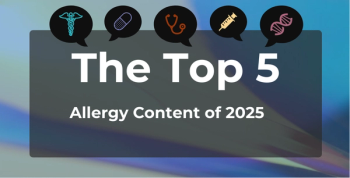
Insights on Health Disparities, Treatment, and Research in Psoriasis in the Latine Community
Key Takeaways
- Latine individuals with psoriasis face misconceptions, often confusing it with other conditions and attributing it to stress or diet.
- Sociofamilial networks play a crucial role in medical decision-making, though guidance may not always be medically sound.
Study highlights barriers to care, treatment preferences, and interest in research participation in psoriasis in the Latine community.
A recent study uncovered 6 key themes reflecting the experiences of Latine patients with moderate to severe psoriasis. The qualitative study is published in JAMA Dermatology.
The prevalence of psoriasis is about 1.9% in the Hispanic population of the US, explained Mona Shahriari, MD, FAAD, an assistant clinical professor of dermatology at Yale University and the associate director of clinical trials at Central Connecticut Dermatology (CCD) Research, in an interview with Dermatology Times®.2 However, Shahriari noted this number may be underreported due to underdiagnosis, selection bias, and lower utilization of the health care system in the Hispanic population compared with the Caucasian population.
Eligible patients were identified through medical records, with recruitment conducted through mail, telephone, or during clinic visits.1 A bilingual researcher conducted open-ended, semistructured interviews either in person or via Zoom between July 7 and August 3, 2022. Interviews, averaging 45 minutes, explored participants' perspectives on their disease, treatment experiences, and attitudes toward research. Audio recordings were transcribed using artificial intelligence (AI) software and verified for accuracy by a bilingual researcher.
The study included a total of 30 participants. Six primary themes emerged from the analysis.
Illness Perception of Psoriasis
First, participants exhibited a lack of familiarity with psoriasis, often confusing it with other conditions like eczema or fungal infections. Many believed it was contagious, while causal beliefs linked it to stress, diet, or "nervios."
Reliance on Sociofamilial Connections for Medical Decision-Making
Reliance on sociofamilial networks for medical decision-making highlighted the importance of shared experiences and cultural influences. Friends and family often provided guidance, though not always medically sound.
Impact on Work Life
Psoriasis significantly impacted work life, with physical conditions such as heat, dust, and uniforms exacerbating symptoms. Participants faced stigma and limited job opportunities due to visible lesions, while others received support from coworkers for accommodations.
Barriers to Accessing Quality Dermatologic Care
Barriers to accessing dermatologic care were prominent, including language and cultural mismatches with clinicians, confusion about insurance, and mistrust in interpreters. These challenges were compounded by work schedules limiting treatment options like phototherapy.
Receptiveness to Prescriptions and Nonprescription Treatments
Participants displayed receptiveness to prescription and nonprescription treatments, including biologics and remedies from Latin America. A few individuals described adverse effects caused by medications purchased outside the US.
Positive Perception and Interest Toward Research
Positive perceptions of biologic treatments were noted, with some valuing injections as particularly effective. Lastly, participants expressed an openness to participating in research, emphasizing its value for advancing psoriasis treatment and supporting others in the community.
However, the researchers acknowledged some study limitations, including being conducted in a single-institution environment in a safety-net system where biologic medications are accessible with prior authorization or through low-income assistance programs. This may have limited the generalizability compared with Latine populations in other systems or income brackets.
Despite these limitations, the researchers believe the study provides new insights into patient’s attitudes toward treatment options and their willingness to participate in new research for psoriasis within the Latine population in the US.
“Clinicians and researchers should recognize that practices and attitudes toward research and treatments among racial and ethnic minority populations can vary,” wrote the researchers. “Future studies should further explore educational interventions and acceptability of biologics and research among Latine populations.”
References
1. Gonzalez N, Wilkerson K, Castillo H, et al. Latine patients’ beliefs, attitudes, and experience with psoriasis. JAMA Dermatol. doi:10.1001/jamadermatol.2024.5391
2. Hebebrand M, Shahriari M. Psoriasis within the US Hispanic population: What can be done to diversity clinical data? Dermatology Times. September 25, 2024. Accessed January 7, 2025.
Newsletter
Stay ahead of policy, cost, and value—subscribe to AJMC for expert insights at the intersection of clinical care and health economics.







































